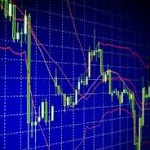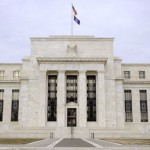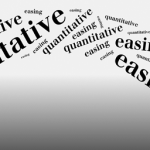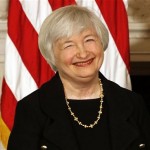Fed Tiptoes Into Rate-Hike Debate

Minutes of latest policy meeting show central bankers discussing when and how to raise interest rates from near zero
The Federal Reserve’s debate about raising short-term interest rates is heating up.
At their Jan. 27-28 policy meeting, officials heard from staff economists about the timing of rate increases, refined plans for the mechanics of pushing rates higher and deliberated over their guidance to the public on the rate outlook, according to minutes released Wednesday with the normal three week lag.
Despite all the discussion, central-bank officials provided no new specifics on the big question many investors want answered right now: When are they going to move?
In public comments since the January meeting, several Fed officials have said they want the option to start raising rates at midyear if the economy keeps performing well.
The minutes suggested many Fed officials were inclined to wait as long as they could, but didn’t indicate how long that might be.
Given a choice between moving too soon and risking derailing the recovery, or acting later and risking inflation or a financial bubble, many officials at the meeting said they were inclined to choose the latter, according to the minutes, which don’t identify who said what or held which view.
The fact that officials were even debating the matter in January—before a strong jobs report released by the Labor Department in early February—suggested the timing of the first rate increase was getting closer in their eyes after years of promising rates would stay low. Some policy makers said the Fed was already late in acting.
The Fed has held its benchmark short-term interest rate—called the federal funds rate—near zero since December 2008 to encourage spending, hiring and investment. Once Fed officials are convinced the expansion is strong enough, they will start raising that rate to prevent the economy from overheating.
Some officials at the meeting argued the debate about timing wasn’t so important and what mattered more was their willingness to adapt policy to the evolving economic outlook.
“It was suggested that the [Fed] should communicate clearly that policy decisions will be data-dependent, and that unanticipated economic developments could therefore warrant a path of the federal funds rate different from that currently expected by investors or policy makers,” the minutes said. In other words, the Fed could move faster or slower on rate increases depending on the economy’s performance.
Stock prices initially rose after the minutes were released, but wobbled for the rest of the day. The Dow Jones Industrial Average finished down 17.73 points, or 0.1%, to 18029.85. Yields on U.S. Treasury bonds fell and the dollar strengthened against the euro while weakening against the Japanese yen and British pound. Some investors took the minutes as a sign the Fed wanted to wait. Analysts weren’t so sure.
“I walk away with the impression that the [Fed] quite intentionally attempted to publish a set of minutes that would fail to move the needle in either direction with respect to the near-term policy outlook,” Stephen Stanley, an economist at Amherst Pierpont Securities, said in a note to clients.
If the Fed is being unclear, it is because officials are uncertain themselves. The economic backdrop is mixed. The job market was strengthening before officials met and January’s employment report showed it had improved even more. Yet inflation is running below the Fed’s 2% target and the global landscape is confounding.
The European Central Bank and other central banks have announced new easy-money policies in recent weeks, developments that reflect weakness but that Fed officials said should strengthen the outlook abroad. At the same time, falling energy prices could boost growth in the U.S. and other large economies. And still, officials highlighted China as a worry and noted that a stronger dollar could hurt U.S. exports.
Another reason for the ambiguity: The central bank is trying to wean the public off ironclad promises of low rates. Such promises helped the Fed to hold long-term rates and boost the economy during the early stages of the recovery, the Fed said, but were becoming less useful.
The Fed now enters a challenging stretch. Chairwoman Janet Yellen will testify before Congress next week on the outlook for the economy and monetary policy. Then Fed officials will consider at their meeting March 17-18 whether to open the door to a midyear rate increase by dropping language assuring the public it would “be patient” before acting.
The minutes showed that officials are approaching that discussion with trepidation.
“Some [officials] expressed the concern that financial markets might overreact, resulting in undesirably tight financial conditions,” the minutes said.
“They’re a real bunch of scaredy cats,” said Joseph LaVorgna, chief U.S. economist at Deutsche Bank Securities. “You can’t be totally hostage to markets.”
Source: WSJ – Fed Tiptoes Into Rate-Hike Debate




























